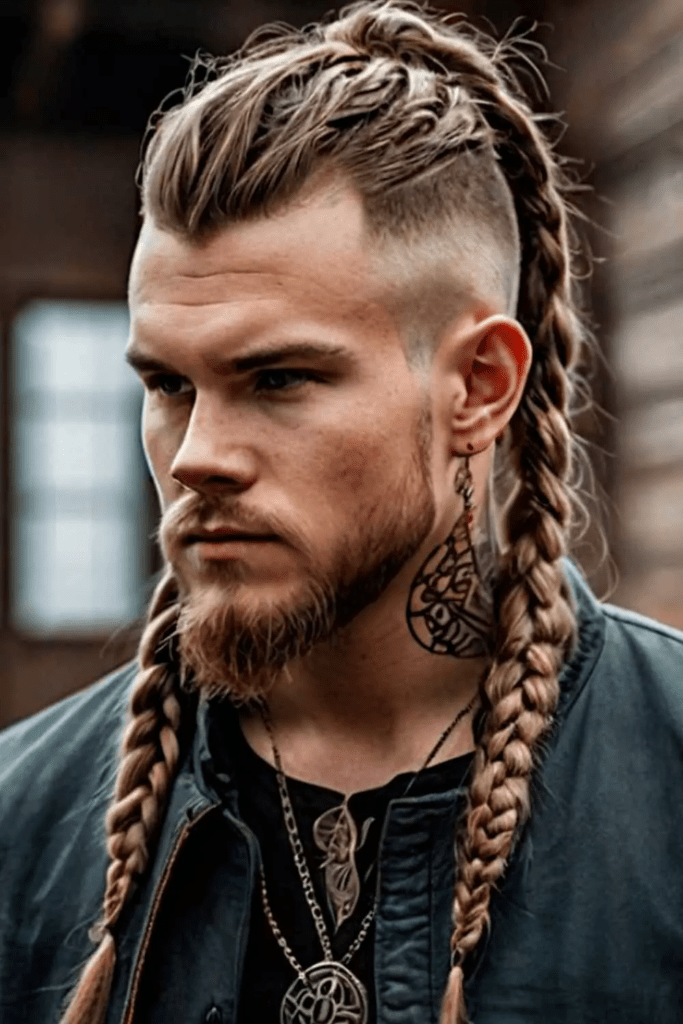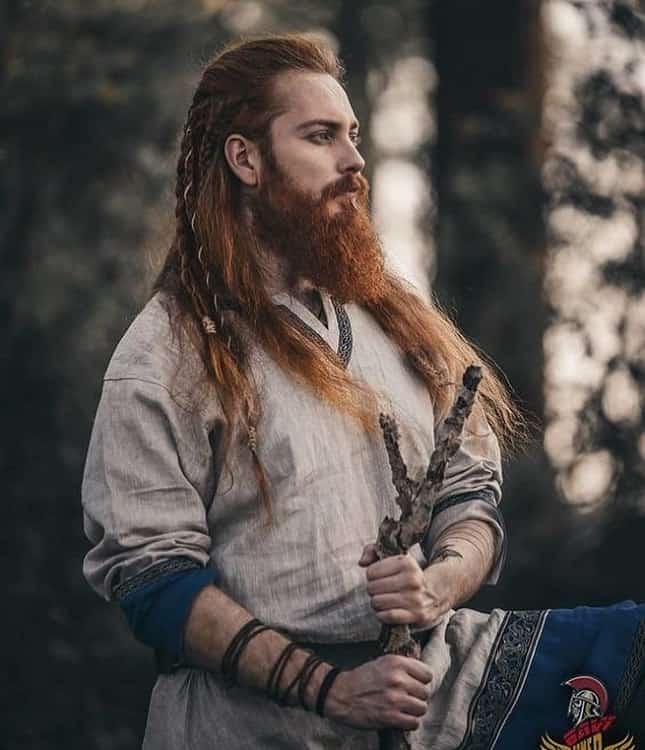Warrior Hairstyles Men: An Examination of Historical Significance and Modern Adaptations

The aesthetic choices made concerning personal grooming, particularly hair, have historically served far beyond mere ornamentation. For individuals engaged in combat, the arrangement of hair often conveyed profound messages, offered practical advantages, and reflected deeply ingrained cultural values. The practices associated with battle-ready coiffures were integral to identity, status, and functionality across diverse civilizations, from the ancient Celts to the formidable Samurai. An exploration of these distinctive styles reveals a rich tapestry of human history, where personal presentation was inextricably linked to prowess and purpose. This article delves into the multifaceted aspects of historical combatant’s looks, examining their origins, practicalities, symbolism, and enduring influence on contemporary masculine fashion.
Historical Roots and Practical Imperatives
Throughout antiquity, the practical considerations of battle frequently dictated the form of hair arrangements. Long, untamed hair, while sometimes symbolic of freedom or natural power, could prove a severe impediment in close-quarters combat. It could obscure vision, be easily grasped by an opponent, or become tangled with equipment. Consequently, many fighting cultures developed methods to manage hair effectively.
The Vikings, for instance, are often depicted with various styles, including long, braided hair, sometimes pulled back into a single braid or multiple smaller ones. These braids were not only functional, keeping hair out of the face during intense engagements but also served as a canvas for intricate knotwork and ornamentation, signifying status or tribal affiliation. Shaved sides, sometimes combined with a longer top section, also appeared, offering a clean, aerodynamic profile while allowing for some length to be styled.
Similarly, the Native American tribes employed a diverse range of hair practices. The iconic “scalplock” involved shaving most of the head, leaving a single, often braided, lock of hair, sometimes adorned with feathers or beads. This was a profoundly symbolic style, representing bravery and a challenge to enemies, daring them to take the scalp. Other tribes utilized long, flowing hair kept in check with headbands or simple braids, reflecting a connection to nature and spiritual beliefs.
In ancient Sparta, the renowned warriors cultivated long hair, which was meticulously groomed before battle. This was a mark of their dedication and discipline, a stark contrast to the short-cropped hair of their helot servants. The act of combing their long locks before a fight was a ritual of readiness, instilling a sense of calm and order amidst the chaos of impending combat. The flowing hair, far from being a hindrance, was seen as an intimidating display of masculine vitality and a symbol of their elite status.
The Samurai of feudal Japan adopted the chonmage, a distinctive topknot where the crown of the head was shaved, and the remaining hair was pulled tight and tied into a small bun at the top. This style was primarily functional, designed to secure the heavy kabuto helmet in place, preventing it from slipping during battle. Beyond its utility, the chonmage became an unmistakable symbol of the samurai class, representing their honor and warrior ethos.
Even in cultures where hair was kept relatively short, like among some Roman legionaries, practicality was paramount. A short cut minimized hygiene issues, reduced the risk of parasites, and made it easier to manage under a helmet. These short, practical cuts ensured that no stray locks would impede vision or offer a handhold to an adversary.
Symbolism and Social Significance
Beyond mere practicality, the coiffures adopted by fighters were imbued with deep symbolic meaning. They could communicate tribal allegiance, social rank, personal achievements, and even spiritual beliefs.
For many indigenous cultures, hair was considered sacred, a repository of strength and spirit. Altering hair could be a ritualistic act, signifying a rite of passage, a period of mourning, or a vow. The specific patterns of braids or the deliberate shaving of sections of the head often carried messages understandable only within that particular cultural context. Certain styles might indicate that an individual had taken a life in battle, achieved a significant victory, or was undergoing a spiritual quest.
The Celtic warriors, often described as having long, wild hair, sometimes stiffened with lime-water, aimed to present an intimidating appearance. This fierce presentation, coupled with their battle cries and often minimal attire, was designed to strike fear into the hearts of their enemies. Their hair, therefore, became an extension of their combative persona, a visual declaration of their untamed spirit.
African tribes, such as the Maasai, often used elaborate braids and dreadlocks, sometimes colored with ochre, to denote age, status, and tribal identity. These styles were not merely fashionable but served as a visual language, communicating an individual’s place within the community and their readiness for various roles, including that of a protector or fighter. The intricate nature of these hair designs also spoke to the dedication and artistry within the culture.
The act of cutting an enemy’s hair, or taking a scalplock, was a profound act of subjugation and humiliation, underscoring the spiritual and symbolic power invested in these forms of personal presentation. Conversely, maintaining a particular arrangement could be an act of defiance, a visual affirmation of identity and resistance against conquest.
Evolution and Modern Adaptation
The legacy of these historically significant coiffures continues to resonate in contemporary fashion. While modern iterations rarely carry the same life-or-death practical implications, they often draw inspiration from the raw power, discipline, and distinctiveness associated with ancient fighters. The appeal lies in a connection to masculinity, strength, and a sense of heritage.
The undercut, for example, a popular modern men’s hairstyle, where the sides and back are shorn short or shaved while the top remains longer, directly echoes styles seen on various historical battlefields, from Viking raiders to Samurai. This style offers a clean, sharp aesthetic that is both practical and bold, allowing for versatility in styling the longer top section—from slicked back to textured and voluminous.
Braids, particularly cornrows, box braids, and various forms of intricate plaiting, have experienced a significant resurgence. These are no longer confined to specific cultural groups but are embraced by a broader demographic, appreciated for their neatness, longevity, and distinctive appearance. The influence of African, Celtic, and Nordic braiding traditions is evident, adapted for contemporary tastes and hair types. These styles are particularly favored by athletes and individuals with active lifestyles, offering a practical way to manage longer hair while maintaining a polished look.
The “man bun,” a style where longer hair is gathered and tied into a bun at the crown or back of the head, also finds parallels in the topknots and practical updos of various ancient fighting forces. It offers a convenient and stylish solution for individuals with longer hair, embodying a sense of casual confidence while subtly referencing historical precedents of hair management for active roles.
Fades, where hair gradually shortens from the top down to the neckline, offer a clean, sharp look that can be combined with longer sections on top for various effects. While a modern barbering technique, the underlying principle of managing bulk and creating a distinct profile resonates with the precise, functional cuts of old.
The adoption of these heritage-inspired styles in contemporary society is not merely a fleeting trend. It represents a deeper cultural phenomenon—a desire to connect with historical narratives of strength, resilience, and individuality. Modern adaptations allow for personal expression while paying homage to the enduring symbolism of the combatant’s hair. They bridge the gap between ancient necessity and modern aesthetic, offering a powerful statement of personal style rooted in a rich historical lineage.
FAQs by Warrior Hairstyles Men
What was the primary function of these styles in ancient times?
The primary functions varied but generally included practicality (keeping hair out of the eyes, managing hygiene, accommodating headgear), identification (denoting tribal affiliation, rank, or status), and psychological impact (intimidation of enemies, display of discipline or spiritual belief).
Were specific styles exclusive to certain warrior groups?
Many styles were indeed culturally specific and exclusive to particular warrior groups, tribes, or social classes. For instance, the chonmage was iconic to the Samurai, while certain scalplocks were unique to specific Native American tribes. These unique styles served as potent markers of identity.
How were these historical hair arrangements maintained?
Maintenance varied greatly depending on the style and culture. Long hair was often braided or tied back. Shaved sections required regular upkeep. Natural oils, plant-based conditioners, and specialized combs or pins were utilized Noone Chairless Chair Price A Comprehensive Analysis Of Its Value Proposition for grooming. Hygiene was often managed through water, natural cleansers, and the deliberate removal of parasites.
Do modern interpretations retain the original symbolism?
Modern interpretations primarily adopt the aesthetic and practical benefits, such as neatness, distinctiveness, and ease of management. While individuals may appreciate the historical context, the profound, often spiritual or status-based, symbolism of the original styles is generally not retained in the same manner within contemporary fashion.
Are there health benefits associated with certain historical practices?
Some practices, such as braiding, could protect hair from environmental damage and tangling, promoting healthier growth. Shaving sections of the head could improve hygiene and reduce the likelihood of head lice in close-quarters living conditions. However, the primary motivations were generally not health-centric in the modern sense.
Tips by Warrior Hairstyles Men
To embrace and maintain these powerful masculine looks with authenticity and care, consider the following recommendations:
Consultation with a Skilled Professional: Seeking advice from an experienced barber or stylist is paramount. A professional can assess hair type, face shape, and lifestyle to recommend an appropriate style and advise on the most effective maintenance routine.
Understanding Hair Type and Texture: Not all styles are universally suitable. Consideration of natural hair texture, density, and growth patterns is crucial for selecting a style that can be realistically achieved and maintained with ease.
Commitment to Regular Maintenance: Many styles inspired by historical fighting forces, particularly those involving fades, intricate braids, or longer lengths, require consistent upkeep. This includes regular trims to maintain shape, re-braiding, and diligent cleansing.
Proper Hair Care Regimen: A suitable hair care routine, encompassing high-quality shampoos, conditioners, and styling products, is essential. This ensures the hair remains healthy, strong, and manageable, preventing breakage and maintaining the integrity of the chosen style.
Research and Personal Connection: Delving into the historical and cultural origins of a desired style can deepen appreciation and provide a more informed perspective on the aesthetic. This connection can enrich the personal significance of the chosen hair arrangement.
Conclusion by Warrior Hairstyles Men
The enduring legacy of these battle-ready cuts extends far beyond the historical battlefields where they originated. They represent a compelling intersection of practicality, symbolism, and cultural identity, offering a profound glimpse into the values and necessities of past societies. From the disciplined topknots of the Samurai to the intimidating braids of the Vikings, these hair arrangements were potent visual declarations of strength, status, and purpose. In contemporary society, their influence is evident in popular masculine styles that evoke a similar sense of power, individuality, and connection to a storied past. The adoption of these heritage-inspired styles underscores a timeless appreciation for robust aesthetics and a desire to embody qualities of resilience and distinctiveness. The journey of these powerful masculine looks, from ancient necessity to modern aspiration, is a testament to their enduring appeal and cultural resonance, perpetually linking present-day personal expression with the formidable spirit of history’s great fighters.







More suggestion: Types Of Haircuts For Women With Long Hair A Comprehensive Guide To Styling Extended Lengths